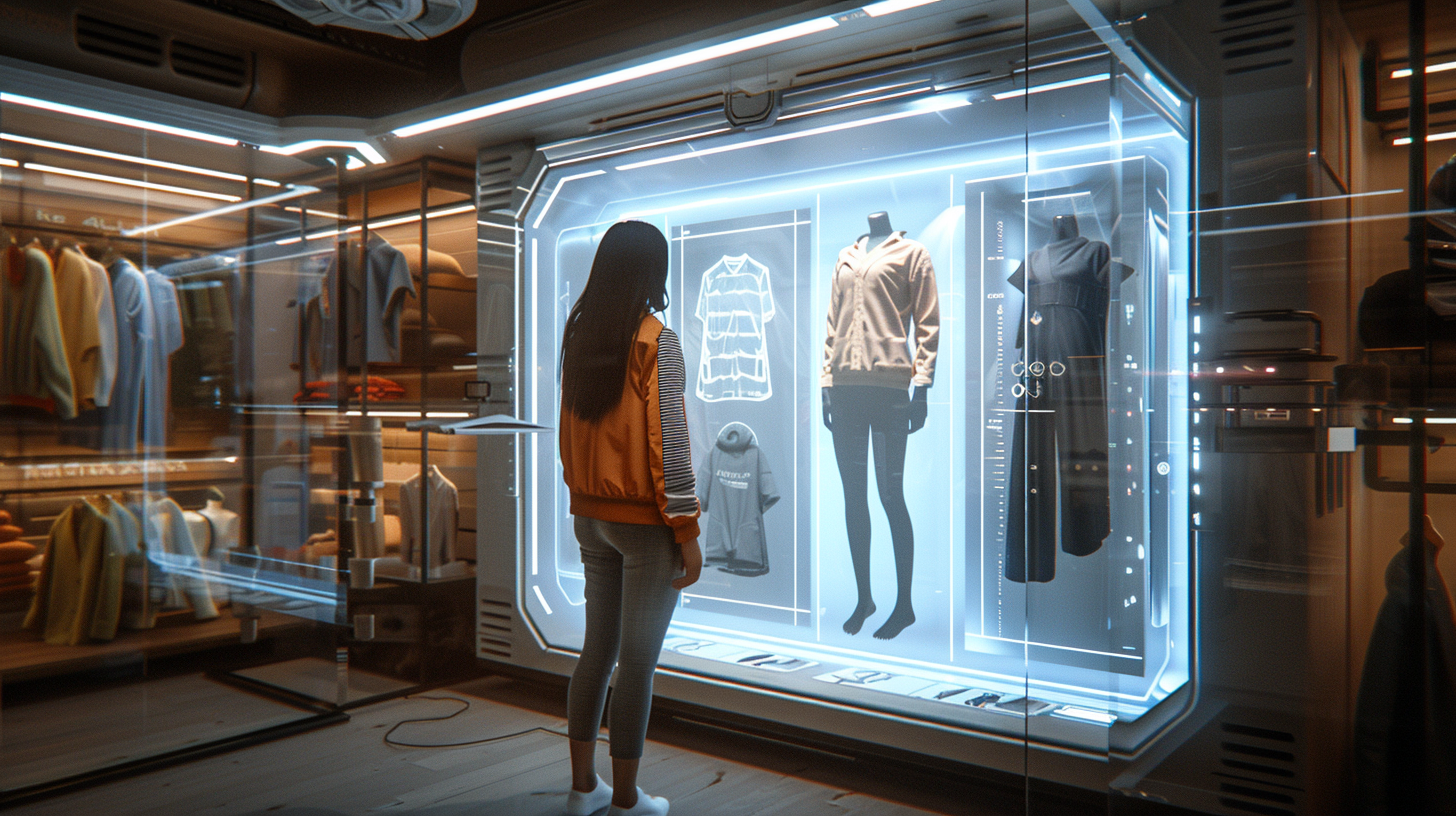
AI-Powered E-Commerce: 17 Best AI Use Cases in E-Commerce
Discover 17 AI-powered e-commerce strategies to skyrocket your sales performance. As an e-commerce business owner, you’re always looking for ways to enhance customer experience, boost sales, and streamline operations. AI can be your secret weapon to achieve all these goals and more.
What is AI-powered E-commerce?
AI-powered e-commerce leverages artificial intelligence to enhance the online shopping experience for customers and optimize business operations for retailers. Imagine having a shopping assistant available 24/7, ready to recommend products based on your preferences and previous purchases. That’s AI in action. It analyzes vast amounts of data to understand customer behavior, predict trends, and personalize shopping experiences.
Top 17 AI-Powered E-commerce Use Cases
Here are 17 AI examples that can upgrade your e-commerce strategy today:
1. Basic Customer Support
Using customer support AI chatbots to manage frequently asked questions can streamline your customer service. This not only reduces your customer service expenses by up to 30% but also ensures customers receive responses 80% faster. Imagine a system where common queries are resolved in seconds, freeing up your team to tackle more complex issues.
2. Enhanced Customer Support
AI chatbot development and integration with user accounts allow for personalized support tailored to individual needs. This personal touch can lead to a 25% increase in customer retention. For instance, a customer asking about their recent order receives a detailed response specific to their purchase history, fostering a stronger connection with your brand.
3. Order Tracking
Offering real-time updates on order status keeps your customers informed and reduces the number of support inquiries by 40%. Instead of customers calling or emailing for updates, they can simply check their order status through an automated system, enhancing their overall shopping experience.
4. Returns
Streamlining the return process through user-friendly conversational interfaces can increase customer satisfaction scores by 15% and encourage repeat purchases by 10%. A chatbot guiding a customer step-by-step through the return process can make it seamless and stress-free.
5. Reward Check
Allowing customers to easily inquire about their loyalty points and rewards can boost participation in your loyalty program by 20%. Customers love tracking their rewards, and a chatbot can provide instant updates, enhancing their shopping experience.
6. Feedback Collection
Gathering and analyzing customer feedback helps improve your products and services. By actively seeking and acting on feedback, you can boost customer satisfaction by up to 30%. Automated systems can categorize feedback, making it easier to identify trends and areas for improvement.
7. Support Requests
Understanding user intent and emotions allows for better categorization and escalation of support issues. This can lead to faster resolution times and improved customer satisfaction. For example, a chatbot detecting frustration in a customer’s message can prioritize the issue for quicker human intervention.
8. Sales Assistant
Providing detailed product information and recommendations through a chatbot can increase your conversion rates by up to 35%. Imagine a virtual assistant that helps customers find exactly what they need, offering suggestions based on their preferences and past purchases.
9. AI Product Recommendations
Offering personalized product suggestions can boost sales by 24%. By analyzing customer behavior and preferences, AI can recommend products that are more likely to appeal to each individual customer, increasing the chances of a sale.
10. AI Product Search
Helping customers quickly find the products they need can lead to a 50% reduction in the time it takes to discover items. A smart search feature can understand customer queries and display relevant results instantly, improving the shopping experience.
11. Interactive Product Quizzes
Engaging customers with interactive quizzes can increase data collection by 30% and conversion rates by 20%. Quizzes can help customers find products that best match their needs, while also providing valuable insights into customer preferences.
12. Predictive Support
Analyzing customer behavior to offer proactive support can reduce cart abandonment by 25% and increase sales. For instance, if a customer seems to struggle with the checkout process, a chatbot can step in and offer assistance, ensuring they complete their purchase.
13. Multilingual Support
Communicating with customers in their preferred language can expand your customer base by 15% and improve engagement rates by 22%. Offering support in multiple languages shows customers that you value their business, no matter where they are from.
14. Visual Search Integration
Allowing customers to upload images to search for similar products can increase engagement by 35% and conversion rates by 25%. Visual search simplifies the shopping process, especially for customers looking for items similar to something they already own or have seen.
15. Sentiment Analysis for Customer Feedback
Analyzing customer feedback to gauge sentiment helps identify areas for improvement, leading to a 20% better customer satisfaction rating. Understanding how customers feel about your products and services allows you to make informed decisions that enhance their experience.
16. Promotions
Automating promotions through AI can increase participation rates by 30% and boost sales during promotional periods by up to 40%. Tailored promotions delivered at the right time can drive customer engagement and sales.
17. Gamification
Introducing interactive games or challenges within your chatbot can enhance customer engagement by 50% and increase the effectiveness of promotional campaigns by up to 35%. Gamification makes shopping fun and engaging, encouraging customers to spend more time on your site.
Main AI-Powered E-commerce Benefits
AI-powered e-commerce presents unique challenges that require thoughtful solutions. For instance, integrating AI into existing systems can be complex. Businesses need to ensure that their current infrastructure can support advanced AI technologies without causing disruptions. Additionally, there’s the issue of data management. E-commerce platforms generate massive amounts of data daily, and managing this data efficiently is crucial for AI algorithms to function correctly.
Privacy concerns also come into play. Companies must ensure that customer data is protected and used ethically, complying with various regulations like GDPR. Moreover, training AI models requires high-quality data, which can be difficult to obtain and curate. This process involves cleaning and labeling data accurately to ensure the AI can learn effectively.
Another challenge is maintaining a balance between automation and human touch. While AI can handle many tasks, such as personalized recommendations and customer service, human oversight is still necessary to manage exceptions and provide a personal connection.
Lastly, cost is a significant factor. Implementing custom AI solutions can be expensive, and businesses must consider the return on investment. This includes not only the initial setup costs but also ongoing maintenance and updates to keep the AI systems running smoothly.
Top 5 AI-Powered E-commerce Trends
Personalized Shopping Experiences
- AI algorithms analyze customer data to offer personalized product recommendations. By understanding user behavior and preferences, AI can suggest items that match individual tastes, increasing the chances of purchase and customer satisfaction.
- Example: Online retailers using AI to show personalized ads based on browsing history and past purchases.
Chatbots and Virtual Assistants
- E-commerce AI chatbots provide instant customer service, answering queries and assisting with purchases. These virtual assistants are available 24/7, ensuring customers receive help anytime they need it.
- Example: An AI-powered chatbot guiding customers through the shopping process, helping them find products, and providing order updates.
Visual Search Technology
- AI-driven visual search allows customers to upload images and find similar products. This technology enhances the shopping experience by making it easier to find desired items based on visuals rather than text.
- Example: A customer uploads a photo of a dress they like, and the AI suggests similar dresses available on the retailer’s website.
Inventory Management and Demand Forecasting
- AI optimizes inventory management by predicting demand and suggesting restock quantities. This helps retailers avoid stockouts and overstock situations, ensuring they have the right products available at the right time.
- Example: An AI system analyzing sales data to forecast future demand for specific products, helping retailers manage inventory efficiently.
Fraud Detection and Prevention
- AI enhances security by detecting and preventing fraudulent activities. By analyzing transaction patterns and identifying unusual behavior, AI helps protect both retailers and customers from fraud.
- Example: An AI system flagging suspicious transactions and preventing potential fraud before it occurs.
Softblues AI Agency As Your AI-Powered E-commerce Developer
Softblues AI Agency offers comprehensive e-commerce AI solutions tailored for diverse businesses. We specialize in developing advanced AI-powered tools that enhance customer experiences and optimize operations. Our team of experts integrates cutting-edge machine learning algorithms with your existing systems to deliver seamless, personalized shopping experiences for your customers. By analyzing vast amounts of data, we help you understand customer behavior and preferences, allowing for targeted marketing and improved sales strategies. Our solutions include intelligent chatbots, recommendation systems, and predictive analytics, all designed to drive efficiency and boost your bottom line.



